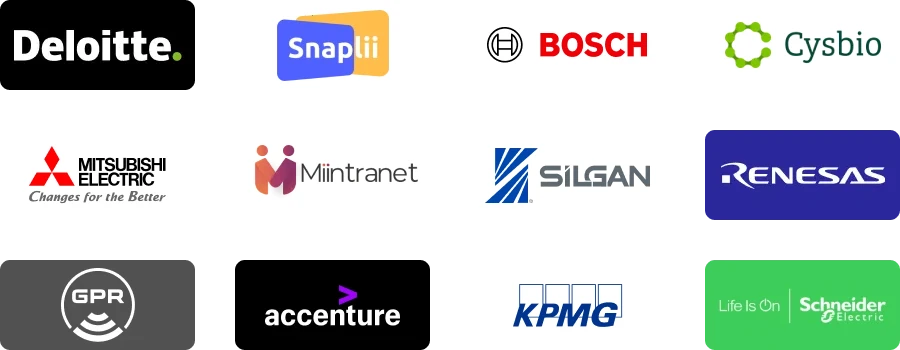| REPORT ATTRIBUTE |
DETAILS |
| Historical Period |
2019-2022 |
| Base Year |
2023 |
| Forecast Period |
2024-2032 |
| Soil Treatment Market Size 2024 |
USD 42,127 Million |
| Soil Treatment Market, CAGR |
5% |
| Soil Treatment Market Size 2032 |
USD 62,240.77 Million |
Market Overview:
The soil treatment market is projected to grow from USD 42,127 million in 2024 to USD 62,240.77 million by 2032, registering a compound annual growth rate (CAGR) of 5% during the forecast period. This growth is driven by the increasing need for sustainable agricultural practices and the rising awareness about soil health. The market is also benefiting from advancements in soil treatment technologies and the growing adoption of organic farming methods. The demand for soil treatment products is further propelled by the need to enhance soil fertility and productivity to meet the rising global food demand.
Several factors are driving the growth of the soil treatment market. The depletion of arable land and the degradation of soil quality due to intensive farming practices are primary drivers. Farmers are increasingly adopting soil treatment solutions to restore soil health and improve crop yield. Additionally, the rising awareness about the environmental impact of chemical fertilizers and pesticides is encouraging the use of organic soil treatment products. Government initiatives and subsidies promoting sustainable agriculture and soil conservation are also contributing to market growth. Furthermore, the development of innovative soil treatment products that offer long-term benefits and improve soil structure is expected to drive market expansion.
Regionally, the Asia-Pacific region is anticipated to dominate the soil treatment market during the forecast period, owing to the large agricultural sector and the high demand for food in countries such as China and India. North America and Europe are also significant markets, driven by the adoption of advanced agricultural practices and the presence of key market players. In contrast, the market in Latin America and the Middle East & Africa is expected to grow at a moderate pace, supported by increasing agricultural activities and improving economic conditions. The regional analysis highlights the diverse market dynamics and the varying demand for soil treatment products across different regions.
Access crucial information at unmatched prices!
Request your sample report today & start making informed decisions powered by Credence Research Inc.!
Download Sample
Market Drivers:
Growing Awareness of Soil Health:
The increasing awareness of soil health is a key driver in the Soil Treatment Market. Healthy soil is fundamental to sustainable agriculture, as it directly impacts crop yield and quality. Governments and agricultural bodies worldwide are emphasizing the importance of maintaining soil health to ensure long-term food security. For instance, the U.S. Department of Agriculture (USDA) has highlighted that soil degradation, including nutrient depletion and erosion, poses significant risks to agricultural productivity. Initiatives aimed at educating farmers about the benefits of soil treatment practices, such as the application of organic matter and the use of soil conditioners, are gaining momentum, encouraging the adoption of soil treatment products.
Environmental Regulations and Sustainable Farming Practices:
Stringent environmental regulations and the growing emphasis on sustainable farming practices are also driving the Soil Treatment Market. Governments and environmental agencies are increasingly enforcing regulations to limit the use of harmful chemicals in agriculture, which can lead to soil contamination and degradation. For example, the European Union’s Common Agricultural Policy (CAP) promotes sustainable agriculture by encouraging the use of environmentally friendly soil treatments that enhance soil health without harming the ecosystem. These regulations are pushing farmers to adopt soil treatment products that meet sustainability criteria, further boosting market demand.
Rising Demand for High-Yield Crops:
The rising global demand for high-yield crops is another significant driver for the Soil Treatment Market. As the world population continues to grow, the pressure on farmers to produce more food from limited arable land intensifies. Soil treatment products, such as soil conditioners and pH adjusters, play a crucial role in optimizing soil conditions for crop growth, helping farmers achieve higher yields. For instance, in India, the government has been promoting the use of soil health cards, which provide farmers with detailed information on soil fertility and the appropriate treatments needed to enhance productivity. This focus on maximizing agricultural output is driving the adoption of soil treatment solutions.
Technological Advancements in Agriculture:
Technological advancements in agriculture are further propelling the Soil Treatment Market. Innovations in soil analysis and treatment technologies are enabling farmers to adopt more precise and efficient soil management practices. For example, the use of GPS and remote sensing technologies allows for the precise application of soil treatments, reducing waste and improving effectiveness. Additionally, the development of bio-based soil treatments, which utilize natural microorganisms and organic matter, is gaining traction as a sustainable alternative to traditional chemical treatments. These technological advancements are making soil treatment more accessible and effective, contributing to the overall growth of the market.
Market Trends:
Increasing Adoption of Bio-Based Soil Treatments:
A prominent trend in the Soil Treatment Market is the rising adoption of bio-based soil treatments. These treatments leverage natural materials like compost, manure, and other organic matter to enhance soil fertility and structure. For instance, companies are increasingly developing biofertilizers that incorporate beneficial microorganisms to promote plant growth and soil health. Governments and environmental organizations are advocating for these sustainable alternatives to chemical-based treatments, recognizing their benefits in reducing soil degradation and supporting long-term agricultural productivity. This shift towards bio-based solutions is driven by the growing consumer and regulatory demand for more sustainable and eco-friendly farming practices.
Growth of Soil Testing and Monitoring Technologies:
The advancement and increasing use of soil testing and monitoring technologies are shaping the soil treatment market. Precision agriculture tools, such as soil sensors and remote sensing technologies, allow farmers to assess soil conditions in real-time. This data-driven approach enables more accurate and efficient application of soil treatments, ensuring that nutrients are applied precisely where needed. For instance, the use of GPS-enabled devices helps in mapping soil variability within fields, allowing for site-specific treatment applications. This trend is helping farmers optimize input use, reduce costs, and improve crop yields, making it an essential component of modern soil management practices.
Rising Focus on Soil Erosion Control:
Soil erosion control is becoming increasingly important, particularly in regions prone to extreme weather conditions that exacerbate soil loss. Governments and agricultural bodies are implementing programs aimed at preventing soil erosion through the use of soil stabilizers and erosion control products. For example, the U.S. Natural Resources Conservation Service (NRCS) promotes practices like contour farming, cover cropping, and the use of erosion control mats to protect vulnerable soils. This emphasis on preventing soil erosion is driving demand for specialized soil treatment products designed to maintain soil structure and prevent nutrient runoff, thereby preserving agricultural productivity.
Expansion of Organic Farming Practices:
The expansion of organic farming practices is another significant trend influencing the Soil Treatment Market. As consumer demand for organic produce grows, farmers are increasingly turning to organic soil treatment methods that comply with organic farming standards. This includes the use of natural compost, green manure, and crop rotation to maintain soil health. For instance, in Europe, where organic farming is particularly strong, the use of organic soil amendments is supported by both consumer demand and government policies that promote sustainable agricultural practices. The growth of organic farming is expected to continue driving the market for soil treatments that align with these eco-friendly practices.
Market Challenges Analysis:
High Costs of Soil Treatment Products:
One of the primary restraints in the Soil Treatment Market is the high cost associated with soil treatment products, particularly those that are bio-based or organic. These products often require more complex production processes and higher-quality raw materials, which drive up costs. For smallholder farmers, especially in developing regions, the expense of purchasing and applying these treatments can be prohibitive. This cost barrier limits the adoption of advanced soil treatment practices, particularly in regions where agricultural budgets are constrained.
Lack of Awareness and Education:
A significant challenge facing the Soil Treatment Market is the lack of awareness and education among farmers regarding the benefits of soil treatment. In many regions, traditional farming practices still dominate, and farmers may not fully understand the long-term benefits of investing in soil health. The lack of access to proper training and resources further exacerbates this issue, making it difficult for farmers to adopt new soil treatment technologies. This gap in knowledge and resources restricts market growth, particularly in rural and less-developed areas.
Environmental and Regulatory Challenges:
Environmental concerns and regulatory challenges also pose significant hurdles for the Soil Treatment Market. While regulations are increasingly promoting sustainable farming practices, they also impose restrictions on certain chemicals used in soil treatments. For instance, the European Union’s stringent regulations on the use of synthetic fertilizers and pesticides can limit the availability and use of some soil treatment products. Compliance with these regulations often requires significant changes to product formulations and manufacturing processes, increasing costs for producers and potentially slowing down the introduction of new products.
Variability in Soil Conditions:
The variability in soil conditions across different regions presents another challenge for the Soil Treatment Market. Soil types, climate, and local farming practices can vary widely, making it difficult to develop one-size-fits-all solutions. This variability necessitates the customization of soil treatment products and strategies, which can be resource-intensive and complex. Addressing these diverse conditions requires extensive research and development, further increasing costs and complicating market expansion.
Market Segmentation Analysis:
By Type, the market includes organic amendments, pH adjusters, soil protection, and others. Organic amendments, such as compost and manure, are widely used to improve soil fertility and structure. pH adjusters, including lime and sulfur, are essential for maintaining optimal soil pH levels for crop growth. Soil protection products, such as biochar and mulch, help in preventing soil erosion and retaining moisture.
By Technology, the market is segmented into biological, chemical, and physical treatments. Biological treatments, which involve the use of microorganisms and organic materials, are gaining popularity due to their eco-friendly nature and long-term benefits. Chemical treatments, including the application of fertilizers and pesticides, are still widely used for their immediate effectiveness. Physical treatments, such as soil solarization and tillage, are employed to manage soil pests and improve soil structure.
By End User, the market is divided into agricultural and non-agricultural sectors. The agricultural sector accounts for the largest share, driven by the need to enhance soil health and productivity in farming activities. The non-agricultural sector, which includes landscaping, turf management, and horticulture, is also experiencing growth due to the increasing emphasis on soil conservation and sustainable practices. The adoption of soil treatment solutions in urban gardening and green spaces is an emerging trend in the non-agricultural sector.
Segmentations:
By Technology:
- Physiochemical Treatment
- Biological Treatment
- Thermal Treatment
By Type:
- Organic Amendments
- pH Adjusters
- Soil Protection
By Region:
- North America
- Europe
- Germany
- France
- U.K.
- Italy
- Spain
- Rest of Europe
- Asia Pacific
- China
- Japan
- India
- South Korea
- South-east Asia
- Rest of Asia Pacific
- Latin America
- Brazil
- Argentina
- Rest of Latin America
- Middle East & Africa
- GCC Countries
- South Africa
- Rest of the Middle East and Africa
Regional Analysis:
North America
North America holds a significant share of the Soil Treatment Market, accounting for approximately 30% of the global market. The region’s market is driven by advanced agricultural practices, a strong emphasis on sustainable farming, and stringent environmental regulations. The United States and Canada are the major contributors, with a high adoption rate of soil treatment products due to the growing awareness of soil health and the need to improve crop yields. In the U.S., government initiatives like the USDA’s Conservation Reserve Program (CRP) promote soil conservation and sustainable land management practices, encouraging the use of soil treatment products to enhance soil fertility and structure. Additionally, the region’s well-developed agricultural infrastructure and the presence of major industry players further support market growth.
Europe
Europe represents around 25% of the global Soil Treatment Market, with the market characterized by strong regulatory frameworks and a high focus on sustainability. The European Union’s Common Agricultural Policy (CAP) plays a crucial role in shaping the market by promoting sustainable farming practices that prioritize soil health. Countries like Germany, France, and the Netherlands are leading markets in Europe, where organic farming and the use of bio-based soil treatments are particularly prevalent. The region’s commitment to reducing chemical inputs in agriculture, combined with government incentives for sustainable farming, drives the demand for environmentally friendly soil treatment products. Europe’s advanced research and development capabilities also contribute to the innovation and adoption of new soil treatment technologies.
Asia-Pacific
The Asia-Pacific region holds the largest share of the Soil Treatment Market, accounting for approximately 35% of the global market. This dominance is due to the region’s extensive agricultural activities and the urgent need to enhance soil productivity to meet the food demands of its large and growing population. Countries like China, India, and Japan are key markets, driven by government initiatives that promote soil health and sustainable farming practices. For example, India’s Soil Health Card scheme provides farmers with detailed information on soil quality, encouraging the use of appropriate soil treatments to improve fertility. The region’s rapid industrialization and urbanization have also led to soil degradation, further fueling the demand for soil treatment products to restore soil health and productivity.
Latin America and the Middle East & Africa
Latin America and the Middle East & Africa together account for the remaining 10% of the global Soil Treatment Market. In Latin America, Brazil and Argentina are the leading markets, driven by large-scale agricultural operations and the growing need to improve soil fertility and prevent erosion. The region’s focus on increasing agricultural exports also supports the demand for soil treatment products that enhance crop quality and yield. In the Middle East & Africa, the market is smaller but growing steadily due to the increasing awareness of soil health and the need to combat soil degradation in arid and semi-arid regions. Government initiatives aimed at improving agricultural productivity and combating desertification are driving the adoption of soil treatment products in these regions.
Key Player Analysis:
- BASF SE
- Bayer AG
- UPL Limited
- Syngenta AG
- AMVAC Chemical Corporation
- Adama Agricultural Solutions Ltd.
- Arkema S.A.
- Solvay S.A.
- FMC Corporation
- Nufarm Limited
Competitive Analysis:
The Soil Treatment Market is highly competitive, with several key players dominating the industry through their extensive product portfolios, innovation capabilities, and global reach. Leading companies like BASF SE, Bayer AG, and Syngenta AG leverage their strong research and development (R&D) efforts to introduce advanced soil treatment products that address the growing demand for sustainable agriculture. These companies also benefit from well-established distribution networks, allowing them to maintain a strong market presence across various regions. UPL Limited and Adama Agricultural Solutions Ltd. are also significant players, particularly in emerging markets, where they focus on providing cost-effective solutions tailored to local agricultural needs. The competitive landscape is further shaped by strategic collaborations, mergers, and acquisitions, as companies aim to expand their product offerings and enhance their market position. The focus on developing eco-friendly and bio-based soil treatment products is driving innovation, intensifying competition in the market.
Recent Developments:
- BASF SE announced in 2023 the launch of a new bio-based soil treatment product aimed at improving soil health and crop resilience. This product, developed through advanced microbial technology, is designed to enhance nutrient availability and promote beneficial microbial activity in the soil, aligning with the company’s commitment to sustainable agriculture.
- Syngenta AG introduced a new soil fumigant in 2024 that targets a broad spectrum of soil-borne pests and diseases. This product is part of Syngenta’s integrated pest management strategy and is formulated to reduce the environmental impact while maintaining high efficacy. The launch reflects Syngenta’s focus on developing innovative solutions that support sustainable farming practices.
- UPL Limited expanded its portfolio in 2023 by acquiring a controlling stake in a European soil treatment company. This acquisition allows UPL to strengthen its position in the European market and enhances its capabilities in offering advanced soil health products, particularly those focusing on soil fertility and disease control.
- Adama Agricultural Solutions Ltd. launched a new soil amendment in 2022 that specifically addresses soil acidity, a common issue in many agricultural regions. This product is designed to adjust soil pH levels, thereby improving nutrient availability and promoting healthier crop growth. Adama’s focus on practical, farmer-friendly solutions continues to drive its innovation efforts in the soil treatment sector.
Market Concentration & Characteristics:
The Soil Treatment Market is moderately concentrated, with a few global players holding significant market shares due to their extensive product portfolios and strong research and development capabilities. Companies like BASF SE, Bayer AG, and Syngenta AG dominate the market, leveraging their advanced technologies and broad distribution networks to maintain a competitive edge. These leading firms focus on sustainable and eco-friendly solutions, reflecting the market’s growing emphasis on environmental responsibility. In addition to these major players, several regional and smaller companies, such as UPL Limited and Adama Agricultural Solutions Ltd., contribute to the competitive landscape by offering specialized and cost-effective soil treatment products tailored to local agricultural needs. The market is characterized by continuous innovation, driven by the need to improve soil health, enhance crop yields, and meet stringent environmental regulations. This dynamic environment encourages ongoing product development and strategic collaborations within the industry.
Shape Your Report to Specific Countries or Regions & Enjoy 30% Off!
Report Coverage:
The research report offers an in-depth analysis based on Technology, Type, and Region. It details leading market players, providing an overview of their business, product offerings, investments, revenue streams, and key applications. Additionally, the report includes insights into the competitive environment, SWOT analysis, current market trends, as well as the primary drivers and constraints. Furthermore, it discusses various factors that have driven market expansion in recent years. The report also explores market dynamics, regulatory scenarios, and technological advancements that are shaping the industry. It assesses the impact of external factors and global economic changes on market growth. Lastly, it provides strategic recommendations for new entrants and established companies to navigate the complexities of the market.
Future Outlook:
- The adoption of bio-based and organic soil treatments is expected to rise as farmers and consumers prioritize sustainability and environmental impact.
- Precision agriculture technologies will drive the demand for tailored soil treatment solutions, enhancing the efficiency of nutrient application and soil management.
- Government initiatives promoting sustainable farming practices will continue to boost the use of eco-friendly soil treatments across various regions.
- Increasing awareness of soil health’s role in agricultural productivity will lead to greater investment in soil treatment products that enhance soil fertility and structure.
- The market will see continued innovation in soil treatment technologies, focusing on improving efficacy and reducing environmental risks.
- Growth in organic farming practices will drive demand for natural soil amendments and conditioners that comply with organic standards.
- Soil erosion control products will gain prominence, particularly in regions prone to extreme weather events and soil degradation.
- The development of region-specific soil treatment products will address diverse soil conditions, catering to the unique needs of different agricultural areas.
- Strategic partnerships and acquisitions among key players will shape market dynamics, expanding product offerings and geographical reach.
- The focus on long-term soil sustainability will drive ongoing research and development in advanced soil treatment solutions, ensuring the market’s growth and evolution.







